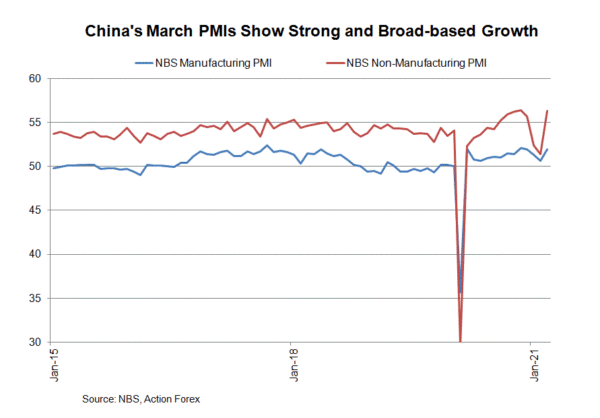China’s official data suggest that the country’s economy recovered significantly in March. PMI readings for all of manufacturing, services and construction activities improved strongly. While seasonal factor (low base effect in February) played a role, the strong first quarter reading signals that economic recovery remains underway. Key risks are global vaccination progress and US-China trade frictions.
The manufacturing PMI published by the National Bureau of Statistics (NBS) gained +1.3 points to 51.9 in March, beating consensus of 51.2. The increase was somehow distorted by the lower base effect (Lunar New Year holiday fell in February this year). However, the reading for 1Q21, at 51.3, marks the strongest since 2017 (51.6). Looking into the sub-indices, “production” jumped +2 points to 53.9 while “new orders sub-index” rose +2.1 points to 51.5. Both were helped by improved demand for nonmetal minerals, special equipment, electrical machinery and computers/electronics devices sectors. Concerning international trade, “new export order” soared to 51.2 from 48.8 in February while imports also improved to 51.1 from February’s 49.6. The job market also improved with the “employment” sub-index rising to 50.1 from 48.1 in February. High commodity prices sent the “input cost” to 69.4, highest since December 2016. Meanwhile, “output prices” also soared to a record high of 59.8.
Covering services and construction activities (at around 80/20 split), the non-manufacturing PMI surged +4.9 points to 56.3 in March. This significantly beat consensus of 52.3. The services PMI jumped +4.4 points to 55.2, while the construction PMI rallied +7.6 points to 62.3.
Whether growth recovery sustains in China is dependent on two factors. First, China’s trading partners which have been struggling to cope with the pandemic. Second, developments of US-China trade relations.














